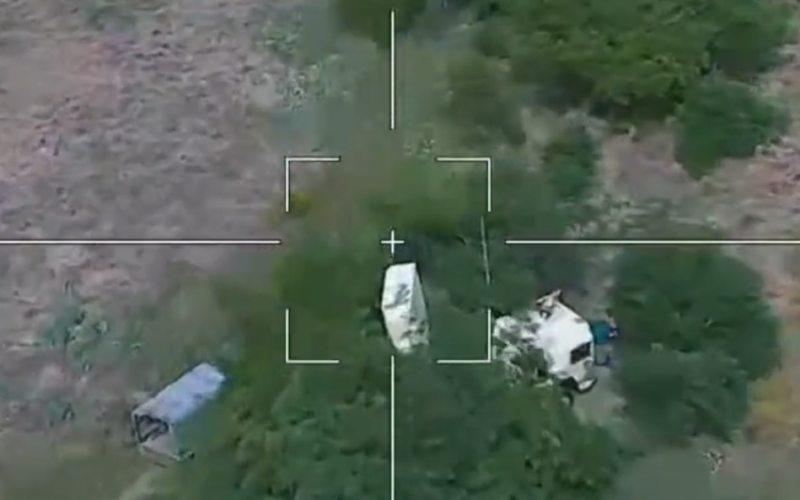A Russian loitering munition recently targeted a Hensoldt TRML-4D air surveillance radar, a crucial component of Ukraine’s IRIS-T SLM surface-to-air missile system.
Footage of the attack surfaced online, showing the kamikaze drone hitting the radar while it was concealed in a forest near a supply truck.
The Hensoldt TRML-4D radar system is an advanced air surveillance technology designed to detect and track airborne threats in real time. Mounted on a truck, it offers mobility and flexibility in deployment. This radar system plays a vital role in providing surveillance, target acquisition, and enabling the launch of IRIS-T missiles to counter and neutralize airborne threats.
The IRIS-T SLM system, comprising the radar and other components, is composed of three launch vehicles and a mobile command center. This modern platform is capable of intercepting and destroying small air-to-air and surface-to-air missiles, such as the Russian 3M-54 Kalibr. The system has an operational range of 40 kilometers (25 miles). Ukraine received its first IRIS-T SLM system in October 2022, with a second system delivered in April 2023.
Reports suggest that the attack on the Ukrainian radar system was carried out using loitering munitions from the Lancet series. These munitions have a limited operational range of around 40 kilometers (25 miles), indicating that the IRIS-T air defense system was deployed near the frontlines. The use of such munitions highlights the vulnerability of the radar system to attacks within close proximity.
This incident has raised concerns due to the potential material loss it could represent for the Ukrainian military and the implications for their air defense capabilities. Currently, only one out of the seven TRML-4D radars pledged has been delivered, according to the official website documenting military assistance provided by Germany to Ukraine

